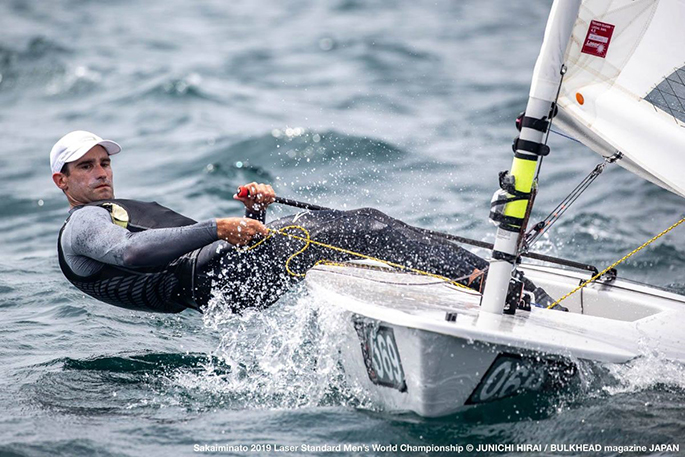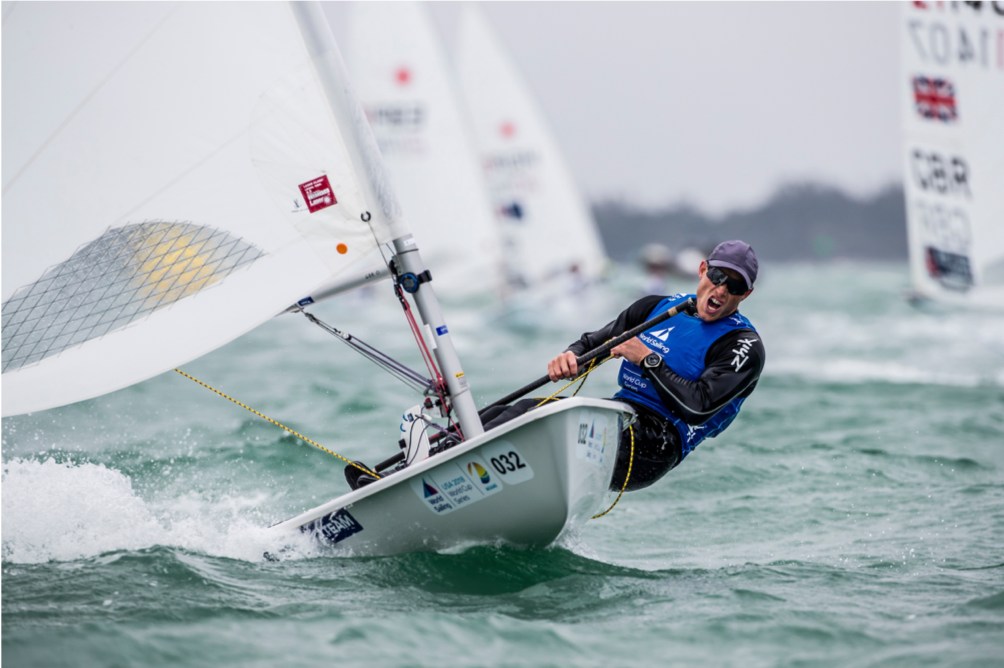There is much skill-based, tactical, and strength-based importance to Laser Sailing. And while not exclusively an endurance sport, on a moderate or windy day especially, greater cardiovascular exercise will enhance a sailor's performance significantly. There's an unlimited demand for a Laser Sailors cardiovascular exercise overall due to short, medium and long term recovery demands of regatta racing, long-duration spent at or near thresholds, building up of strength training volumes over time, and more.
The below chart is not an exhaustive list of cardio benefits, but it should be sufficient to entice you into upgrading your cardio program if it’s not already a strong one. Remember, the wider the cardiovascular base, the taller your potential peak fitness can be.

Sam Meech Laser Sailing Fitness
I do a reasonable amount of cycling to help me at threshold (which our windy races are) and to help with recovery over the week long event.
Sam Meech, NZ Sailing Team.
We divided the Physiological Benefits into 3 Categories:
Metabolic Adaptations to Training: The breakdown of nutrients to obtain energy & the synthesis of compounds needed by cells.
Cardiovascular Adaptations to Training: Adaptations that lead to increases in aerobic capacity and improved endurance performance. These are supported by changes in physical size and function of the heart plus improvements in oxygen delivery and it's use in muscles.
Overall/Health Benefits: A few bonus items that occur as a result of cardio training.
| Physiological Benefit | Laser Sailing Practical Benefit |
| Metabolic Adaptations to Training | |
| Increased storage capacity for fuel (muscle glycogen and muscle fat stores) | Use glycogen for longer during extended training sessions and regattas. Be less reliant on putting extra fuel in your body ( energy gel etc.) |
| Shifts in fuel oxidation (better utilization of fat-based fuels) | Preserve glycogen stores longer to be used with “sprint” hiking/low modes, and utilize fat for fuel when hiking normally |
| Increased muscle oxidative capacity | Muscles are more resistant to fatigue, especially during higher intensity efforts. The body is using more efficient energy pathways, which means that high work rates can be sustained longer. |
| Cardiovascular Adaptations to Training | |
| Increased heart size and stroke volume | The heart muscle will become much bigger and will be able to pump more blood with each beat. This is an important determinant of your physical capacity. Your resting heart rate may slowly become lower. |
| Increased cardiac output | Higher cardiac output responds to higher oxygen demand. This helps deliver oxygen to working muscles during higher intensity hiking. |
| Increased ability to deliver oxygen to muscle through an increase in blood/plasma volume | Longer hiking time at any given intensity, greater power, and less fatigue. |
| Increased maximal aerobic capacity (VO2 max and functional threshold) | These are major determinants of your overall aerobic capacity. Perform/hike at an overall higher intensity, sustain the intensity for longer periods without fatiguing, and recover much faster after each higher intensity bout. |
| Increased ability to produce the same amount of work at lower heart rates | Stay calmer and have better mental clarity during periods of high work rate. Results in better decision making on the racecourse. |
| Improved ability to recover | Short Term: During “resting” phases of upwind hiking, clear lactate from your legs faster and lower your heart rate quicker - allows you to use work mode again soonerMedium Term: Recover more rapidly between races and be fresher for the next raceLong Term: Handle multi-day regattas more easily with higher quality recovery at night |
| Overall/health benefits | |
| Improved recovery after training | Recover faster from training days and strength building workouts |
| Improved immune system robustness | The immune system will become more resilient to training stress and prevent you from getting sick |
You should be fairly convinced by now about the importance of a regular cardiovascular fitness program built into your training. This can be completed in the offseason and also maintained throughout your racing season depending on the volume of sailing you do. The beauty of cardio training is that it can be based on an activity you enjoy. Cycling, running and/or swimming are 3 common choices of World Champions and Olympic Champions.
But you can pick any activity and apply good structure to it - ice skating, cross country skiing, aerobic dance (We’ve heard Slingers was big into Zumba), etc. It’s hard to think of a dominant athlete in the Laser class who did not have an extremely high level of cardiovascular exercise. Depending on their periodization phase and amount of sailing on tap, top sailors will train approximately 15 hours per week, with a majority of that loading distributed towards cardio-based training.

Nick Thompson ISA Guest Coach
Fitness won't guarantee a win, but you can't win without it
Nick Thompson, Team GBR
Of course, Laser sailing itself will build your fitness, but we can’t sail every day, nor can we control the wind... and it’s nice to have a varied activity that can adhere to a more predictable structure (controlled HIIT, volume, timing, intensity of work, etc.) and therefore elicit very specific physiological adaptations.
Stay tuned for our next Laser Sailing Fitness article outlining the practical implementation of cardiovascular exercise programs for Laser sailing.